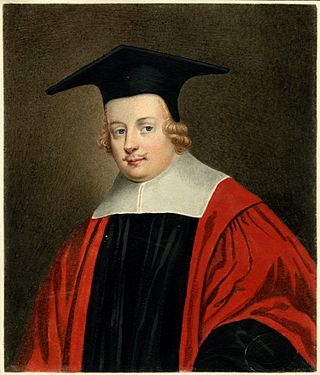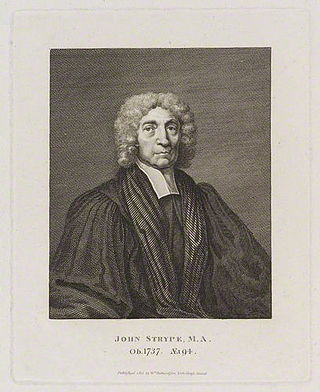
Henry Hammond was an English churchman, church historian and theologian, who supported the Royalist cause during the English Civil War.

John Strype was an English clergyman, historian and biographer from London. He became a merchant when settling in Petticoat Lane. In his twenties, he became perpetual curate of Theydon Bois, Essex and later became curate of Leyton; this allowed him direct correspondence with several highly notable ecclesiastical figures of his time. He wrote extensively in his later years.

Sir Francis Windebank was an English politician who was Secretary of State under Charles I.

Sir Bulstrode Whitelocke was an English lawyer, writer, parliamentarian and Lord Keeper of the Great Seal of England.

A cowlick is a section of human hair that stands straight up or lies at an angle at odds with the style in which the rest of an individual's hair is worn.

Gian Paolo Lomazzo was an Italian artist and writer on art. Praised as a painter, Lomazzo wrote about artistic practice and art theory after blindness compelled him to pursue a different professional path by 1571. Lomazzo's written works were especially influential to second generation Mannerism in Italian art and architecture.
John Gordon was a Scottish prelate.
Patrick Young, also known as Patricius Junius, was a Scottish scholar and royal librarian to King James VI and I, and King Charles I. He was a noted Biblical and patristic scholar.

George Haydock was an English Roman Catholic priest. He is a Catholic martyr, beatified in 1987. He is not to be confused with his relative, also a priest, George Leo Haydock (1774–1849).
Dr. Calybute Downing (1605–1643) was an English clergyman, a member of the Westminster Assembly. Also a civil lawyer, he is now remembered for political views, which moved from an absolutist position in the 1630s to a justification of resistance to authority by 1640, within a contractarian setting.
Leonard Hutten (1557?–1632) was an English clergyman and antiquary.
Matthew Gwinne was an English physician.
Sir Adam Newton, 1st Baronet was a Scottish scholar, royal tutor, dean of Durham and baronet.
Henry Atkins (1558–1635) was an English physician.
Robert Boreman or Bourman D.D, was a Church of England clergyman who supported the Royalist cause in the English Civil War.
John Hanmer (1574–1629) was a Welsh bishop of St. Asaph.
James Wadsworth (1572?–1623) was an English Catholic priest and Jesuit.
Thomas Rundle (c.1688–1743) was an English cleric suspected of unorthodox views. He became Anglican bishop of Derry not long after a high-profile controversy had prevented his becoming bishop of Gloucester in 1733.

William Denton was an English physician and political writer.
Leonard Poe was an English physician.








